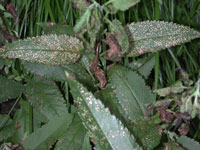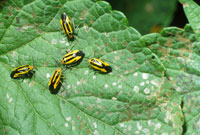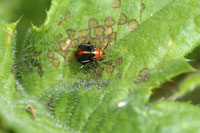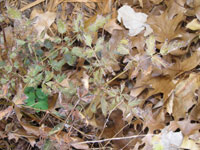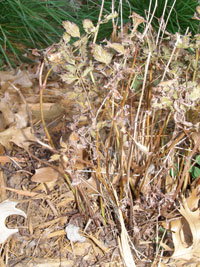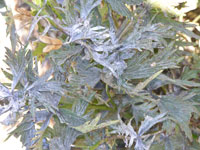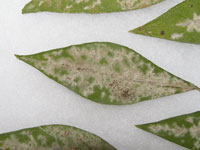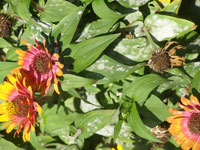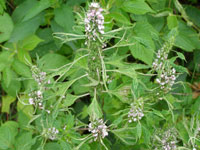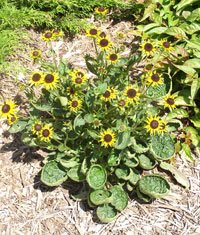Extension > Garden > Diagnose a problem > What's wrong with my plant? > Annuals and Perennials > Astilbe
Annuals and Perennials > Astilbe
1 of 4
Fourlined plant bug
- Occurs May to early July
- Feeding causes brownish or sunken spot on leaves
- Nymphs are red or red and black; Adults are greenish yellow with 4 black stripes, 1/4 to 1/3 inch long
- More information on Fourlined plant bug
2 of 4
Heat and Drought Stress
- Edges of leaves curl upward and turn brown or black
- Entire leaves turn brown and dry up
- Plants may look thin and ragged
- Common in plants that receive too much sun or too little water
3 of 4
Powdery Mildew
Erysiphe polygoni
- Powdery, fluffy, white spots or blotches on leaves and stems
- Tiny raised black dots may be visible within white spots late summer or early fall
- Spots typically start on lower leaves, but can spread to cover the entire plant
- Severely infected leaves may be completely covered in white or grayish white fungi
- In some cases, leaves become curled or twisted or turn yellow due to the infection
- More information on Powdery Mildew
4 of 4
Herbicide Damage
Phenoxy herbicide ex. 2,4D
- Leaves are twisted, cupped, or distorted
- Leaves may appear thick and leathery
- Veins in leaves are thick and close together
- Side of the plant closest to the herbicide application is most severely affected
- In severe cases the entire plant may be affected



